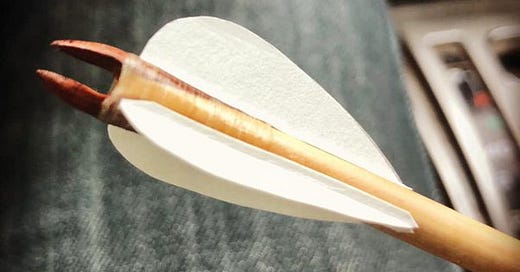You almost certainly know the Japanese word for “almost certainly”. It’s HAZU.
「はず」という言葉は知っているはずです。
Or in English:
You almost certainly know the word hazu.
We can represent the meaning of hazu in English in many ways, including “doubtless”, “definitely”, “probably”, “expected”, “supposed to”, “very likely”, “surely”, and “should”, “ought” or “must” (not in the sense of being compelled or required to do something, but rather strongly presumed).
It’s useful to use this in negated form too: はずがない. This means “there is no way”, “it’s very unlikely”, “I strongly doubt”, “I’d be surprised if”, or “almost surely not”.
「はず」という言葉はしらないはずがない。
Meaning, “there’s no way you haven’t learned the word hazu.”
In other words, hazu represents a state of strong epistemic likelihood, usually based on logical inference from some sort of knowledge of the context.
It’s interesting that Japanese would have chosen to express this state of affairs in the form of a “noun”, or at least a word with the syntactic form of a noun, in contrast to English, which instead uses adjectives and adverbs and modal phrases. This discrepancy is likely one of the things that some Japanese learners wrestle with. You have to map your English linguistic neural connections for handling “modifier-like” things into new Japanese neuronal networks for handling “noun-like” things.
The origin of hazu
Unless you are in the habit of reading pre-war Japanese, I’d be surprised if you had ever seen hazu written in kanji. But there is a kanji: it’s 筈.
Its original meaning is the notch on the end an arrow that you fit onto the bowstring. It’s also called a “nock”. (It was also used to refer to notches on the top and bottom end of the bow where the bowstring was attached.)
It’s this indented, V-shaped thing:
Don’t bother asking your Japanese friends about this. They will have never heard of it, unless they are into archery (弓道/kyūdō). This is the reaction I got from one native informant:
Why did a notch on an arrow come to be associated with “likelihood”?
The notch’s purpose in life is that is is supposed to fit perfectly onto the bowstring. That’s why during the Edo Period the word hazu began to be used more generally to represent anything, including abstract things, that were supposed to be the case, that were supposed to fit into reality.
The word hazu occurs once every 5000 words in Japanese. It’s in the top 500 most common words. You’ll need to learn it for JLPT N4.
Taking a closer look at the character 筈
Now let’s take a closer look at that character.
That thing on top is 竹, the bamboo radical (take-kanmuri). So it’s something to do with bamboo, like things made of bamboo. A pole (竿/sao) is made of bamboo. So is a box (箱/hako). So is a flute (笛). A tube (筒/tsutsu) would have been made of bamboo. A laugh (笑う/warau) is…uh…related to bamboo how?1
The thing on the bottom is 舌, pronounced shita in Japanese, meaning tongue. This is purely pictorial: it’s a mouth (the square at the bottom) with a tongue sticking out at the top. This is what’s called a “compound pictorial character”.
So 筈 is a wooden tongue. Makes sense. That’s exactly what the notch in the arrow is. Here’s something to remind you:
Before we go, one additional use of hazu: はずがあわぬ/hazu ga awanu, meaning “the string does not fit into the notch”—in other words, inconsistent or incoherent.
Today’s trivia: the word shita for tongue can also be used for the clapper of a bell—which also can be called “tongue” in English! And both 舌 and “tongue” are used for the vibrating part of a reed. So both Japanese and English arrived at the common abstract notion of a tongue as a longish object, attached to something at one end, that can swing back and forth.
There are also 130 people in Japan with the last name 舌!
According to one theory, the bottom part used to be a dog (犬) and the character represents a dog laughing as he romps around in a bamboo grove. Another theory is that it’s a dancer making the gods laugh, with the bamboo on top in this case actually two hands on top of the dancer’s head.








“There are also 130 people in Japan with the last name 舌!” This is really fascinating. Are they all in a particular region of Japan? Do you think they are all related? Did they just choose that name at the beginning of Meiji Era when people were required to have a family name? If so, what a sense of humor they had.
Hi Bob, I know this comment has nothing to do with your post, however I saw a comment of yours from 2016 on a blog post talking about non-native translators. While I definitely agree that as a general rule you should stick to translating into your native language, don't you believe there are exceptions to the rule? Personally, I strongly believe there are some.
I tweeted at you too but I am guessing you did not get any notifications. Anyways I am looking forward to reading your response to this. Thanks very much.